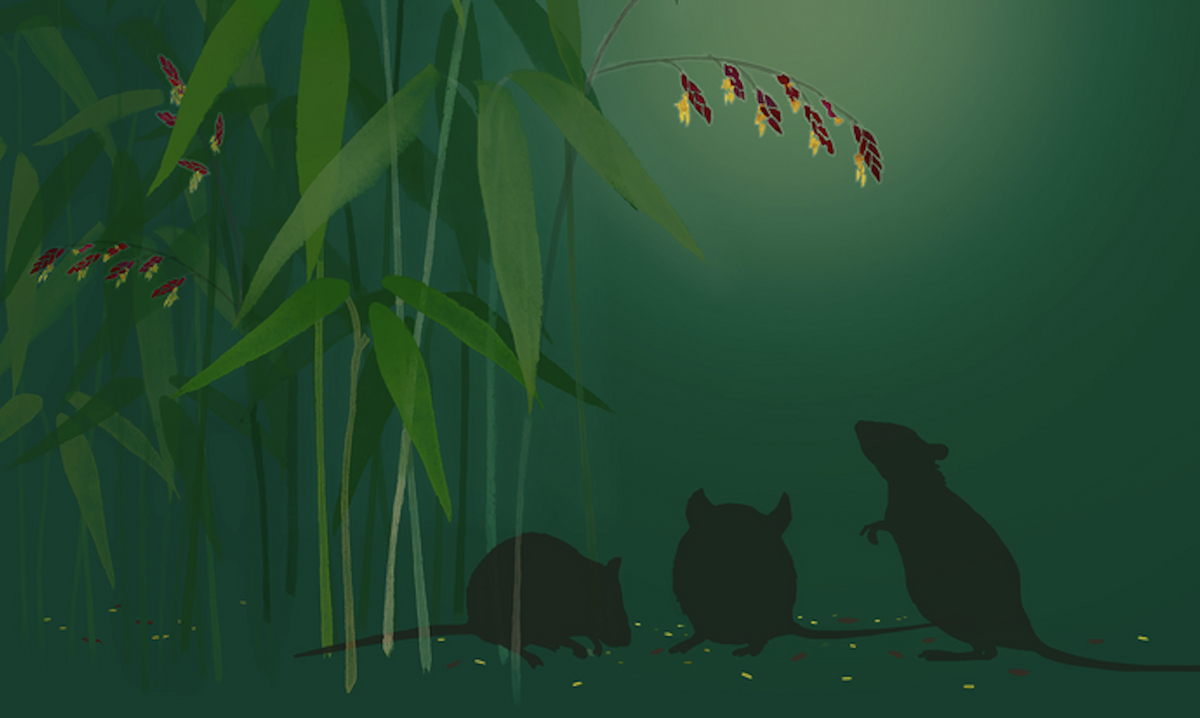Once-in-a-century dwarf bamboo flowering linked to rodent population outburst and disease outbreak

The rare, once-in-a-century large-scale flowering of a dwarf bamboo species may trigger a population boom of the Japanese field mice, leading to forestry damage and disease outbreaks, according to a new study.
Researchers, including those from Nagoya University in Japan, say the large-scale flowering and seeding of the dwarf bamboo Sasa borealis is a rare event called that occurs only once every 120 years with the next one not expected in over 100 years.
During these rare events, known as “masting,” they say some plants produce heavy seed crops, coordinating their flowering and fruiting to do so simultaneously and over a wide area.
Previous studies had found rodent outbreaks to be associated with feeding on bamboo seeds in these mast years, raising concerns for agricultural and forest damage, as well as the risk of diseases spread by these creatures.
Scientists began observing the masting of the dwarf bamboo on forest floors throughout the Asian country in the 2010s, and on the effects of the seeding of the species on local rodent populations in Aichi Prefecture, Japan.
In the new study, published recently in the journal Ecological Processes, they compared data from before and after the masting and found an increase in the populations of both the large and small Japanese field mouse.
However, researchers did not find a similar effect on the rodent species Smith’s voles in the same area.
“The interesting biological phenomenon that masting of bamboo and dwarf bamboo can cause an outbreak of forest rodents has long been something of a legend,” Nagoya University Associate Professor Hisashi Kajimura said.
“This research is important because it clarifies this long-suspected phenomenon by comparing rodent populations before and after masting,” Dr Kajimura, a co-author of the study, said.
Researchers say the increased rodent populations remained even two years after the masting, even though the dwarf bamboo itself had died.
“There was also a high proportion of female juveniles in the population, suggesting that the simultaneous fruiting resulted in good conditions for reproductive females,” study co-author and doctoral student Hanami Suzuki said.
The findings, according to the researchers, “show for the first time” how the field mouse population responds to the seeds of the dwarf bamboo, especially those with a longer cycle and larger supply.
“This research is expected to provide important clues for understanding the realities of sudden environmental changes in forest ecosystems and the interactions among the organisms that live there,” researchers wrote in the study.
“Our results indicate that the mast seeding of S. borealis affected the population dynamics of Apodemus species over a long time and their individual composition of different growth stages,” they noted.

